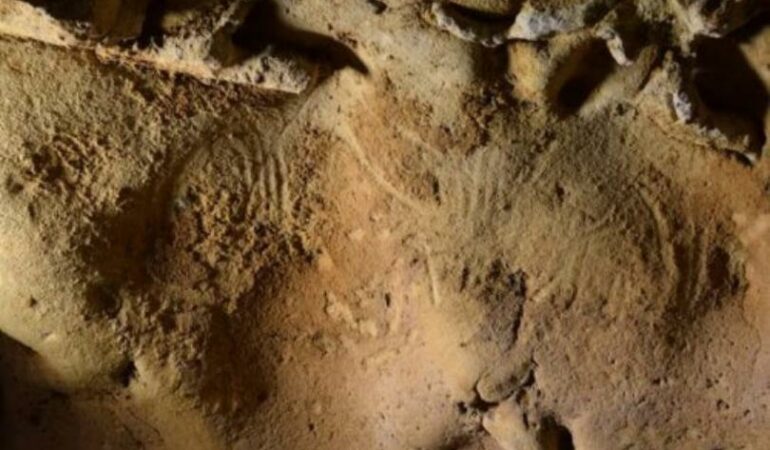The Loire Valley is home to the oldest known cave engravings in Franceand possibly Europe with designs that date back at least 57,000 years to the time of the Neanderthals.
The findings, which were published on Wednesday in the American journal PLOS One, show that the engravings, which are also known as finger-flutings, were made before Homo sapiens arrived in Western Europe.
The research team wrote that the abstract designs “make a new and very important contribution to our knowledge of Neanderthal behavior” and are “clearly intentional.”
“The thought process that gave rise to conscious design and intent is the result of the layout of these non-figurative graphic entities, which is an organized, deliberate composition.”
In 1846, the Roche-Cotard cave was discovered near Tours in central France. Until 1912, the site’s owner cleared the entrance of silt that had been there for thousands of years.
In 2008, extensive archaeological excavations began, and dating methods proved that the engravings were made before the area was thought to have been settled by modern humans.
In a separate press release, the authors stated, “The engravings have been dated to over 57,000 years ago and, thanks to stratigraphy, probably to around 75,000 years ago, making this the oldest decorated cave in France, if not Europe.”
According to a statement issued by the French CNRS research institute and the University of Rennes, both of which participated in the study, the majority of the images were traced with a finger and “represent non-figurative designs.”
They stated, “Some are rather simple, with long lines over a large surface or finger impacts surrounding a large fossil set in the rock, while others are more elaborate.”
Disclaimer: The views, suggestions, and opinions expressed here are the sole responsibility of the experts. No Marketwise Analytics journalist was involved in the writing and production of this article.

